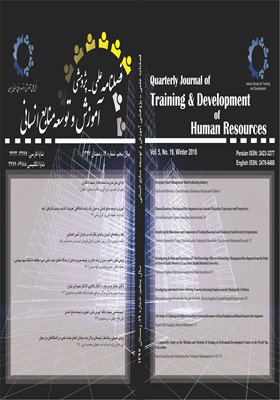-
-
List of Articles
-
Open Access Article
1 - Designing an Empowerment pattern for Sepah bank staff Based on Organizational Learning
Marzieh Damirchi Rasul Hoseini Masumeh Oladian -
Open Access Article
2 - Comparison of the Effectiveness and Efficiency of Three Methods: Electronic training, Electronic Performance Support System, and Combination of Electronic Training with Electronic Performance Support System to Improve Employee Performance (Case Study: Employees of Day Insurance Company)
Marjan Zahedian Hashem Fardanesh Javad Hatami kiumars taghipour -
Open Access Article
3 - Professional Identity of Human Resource Training and Development of Graduate Students at Tabriz University: A Phenomenological Study
Ali Imanzadeh vahideh jafariyan -
Open Access Article
4 - Designing and Validating a Model for Developing of an Individual Development Plan in Ansar Bank
Akbar Kamizi Abasalt Khorasani Kambiz Kamkari -
Open Access Article
5 - The Role of Continuing E-Learning on Professional Development: A Case Study of the Telecom Industry
Farnoush Aalami Reza Sajady Mohammad Khalajghasemabadi -
Open Access Article
6 - The Analysis of the Current Status of Training Evaluation in Private Banks of the Country (Qualitative Research)
Ali Dana MohammadReza Nili Ahmadabadi Ali Delavar MohammadAli Dehghandehnavi Khadijeh Aliabadi
-
The rights to this website are owned by the Raimag Press Management System.
Copyright © 2017-2026







